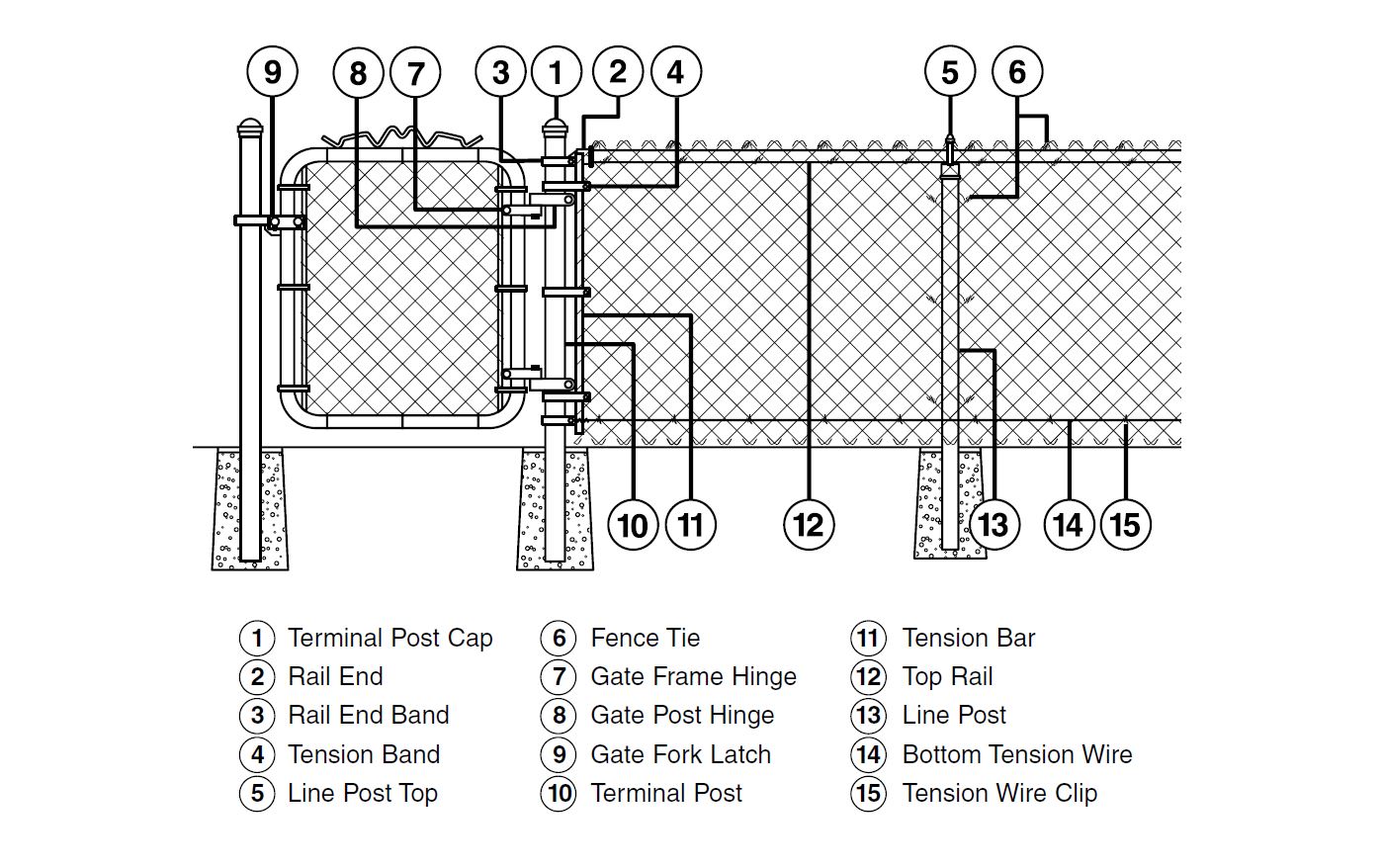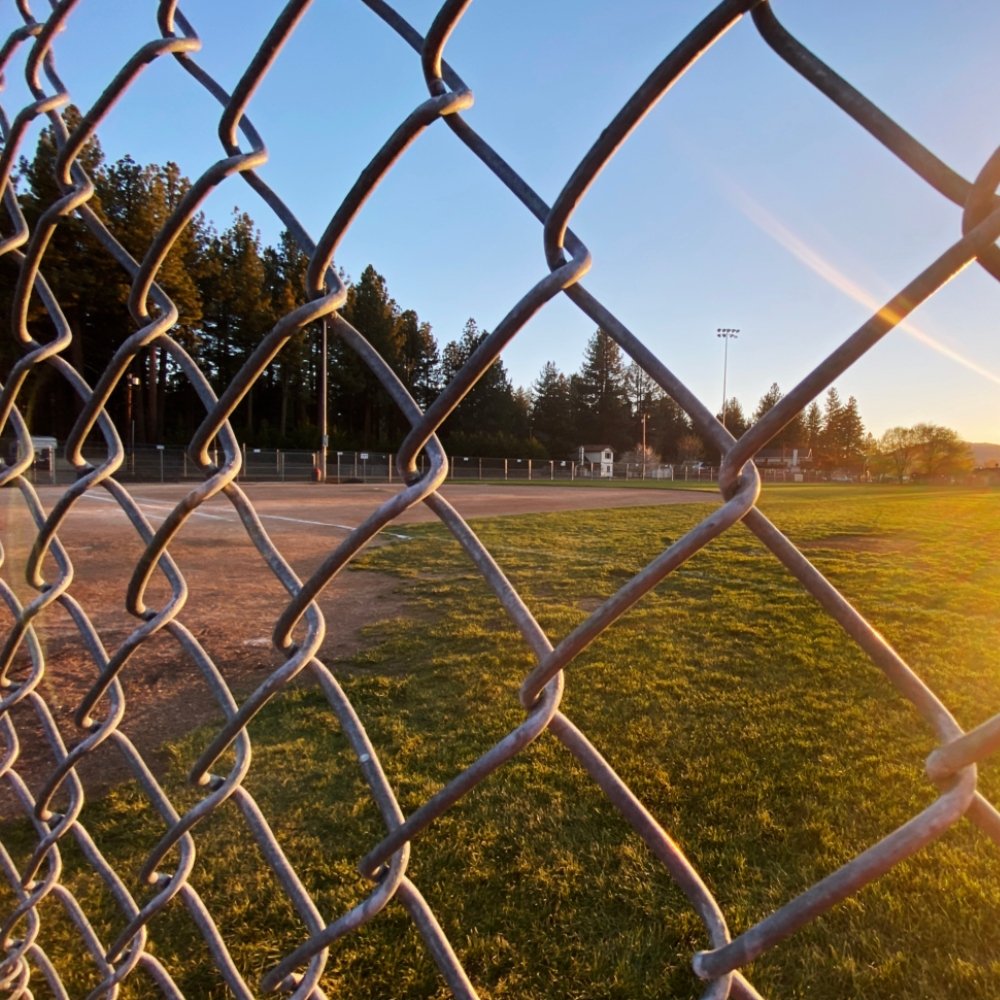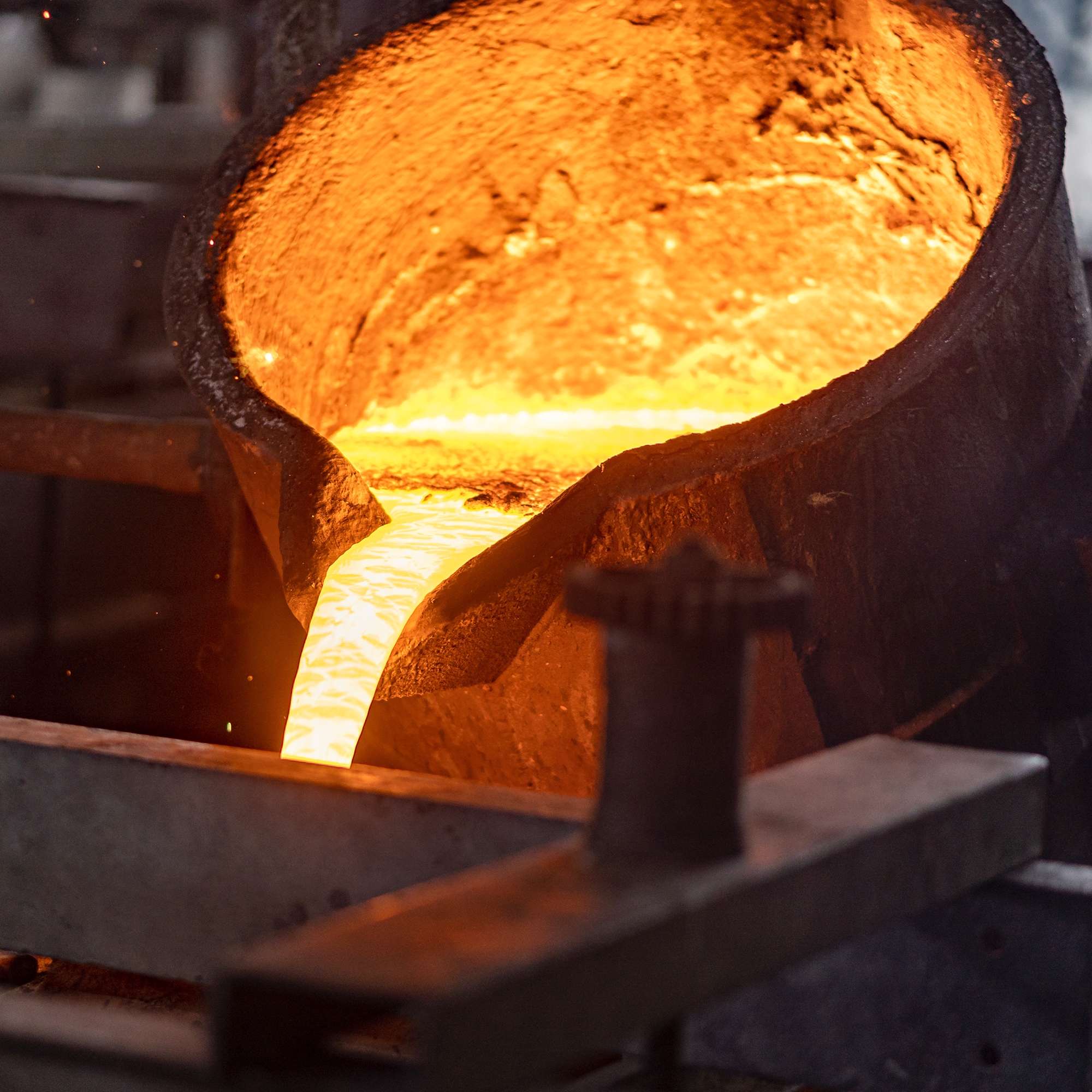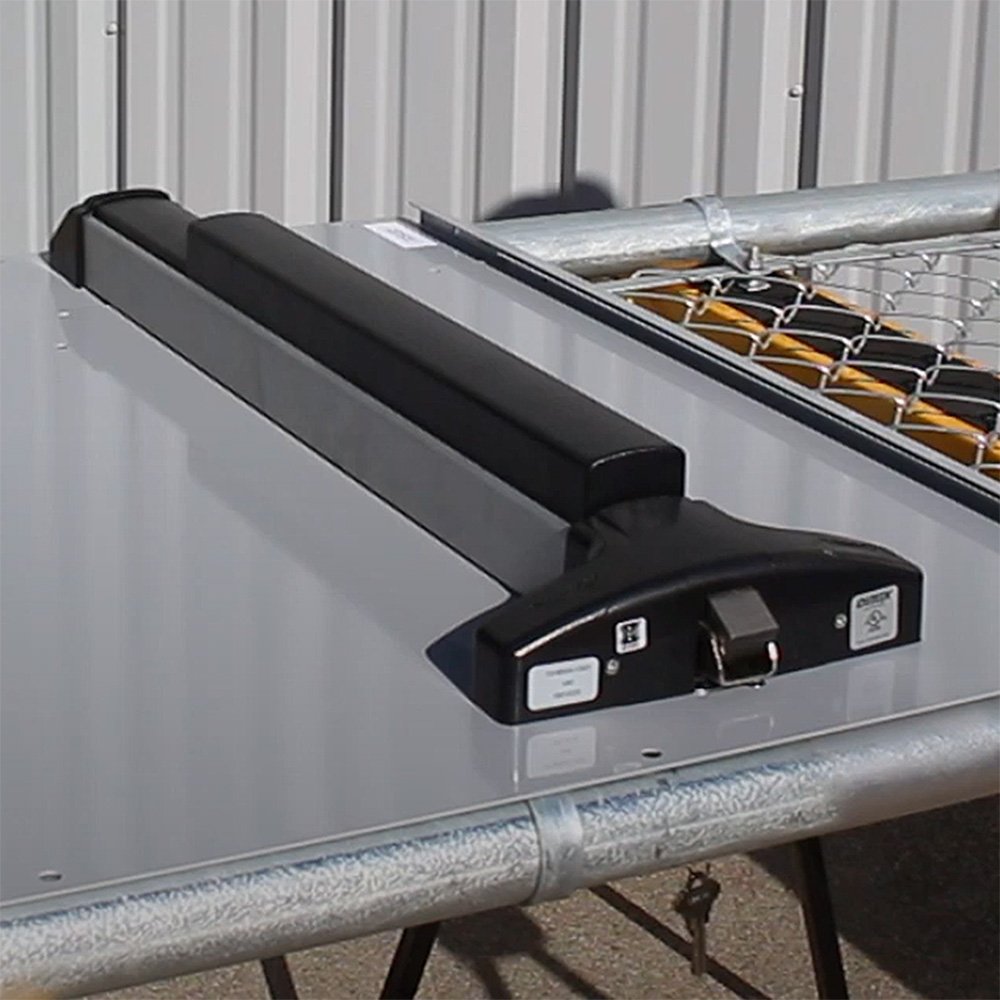Guide to Cyclone Fence Parts
The term cyclone fencing actually refers to chain link fencing. The name "cyclone" comes from its ability to withstand the harsh winds of tropical storms. Because the sections of cyclone fencing, or chain link fencing, are made of steel wire mesh woven into large diamonds, the wind can pass through. The mesh's ability to withstand strong wind offers another benefit: cutting the wind and lessening the wind's force and speed as the air particle path is obstructed and redirected.
Whatever you want to call it, cyclone or chain link fencing comprises many components with names and purposes. This handy guide will show you exactly where everything goes, and we have explained the purpose of each part so you can understand its importance. Remember that there is no one-size-fits-all for cyclone fence assembly; you may find variations with products and in the installation process. Your preference and the parts to accommodate the landscape are significant factors.
Knowing the parts of a cyclone fence will help build and repair a cyclone fence. While it may seem overwhelming, most parts are easy to install, and if they are not, we offer tools to help.
Forget something? Need to replace a part? Look at the diagram to see where all the cyclone fence fittings and components are located. If you aren't sure why you would need a piece, we have an explanation.

- Terminal Post Cap: This is a post cap that will not have the top rail or top wire go through it. Generally, these are dome-shaped, acorn-shaped, or bullet-shaped. They go on terminating posts like gates, corners, or ends.
- Rail End: end at a cup or clamp and are fastened to the brace band or rail end band.
- Rail End Band: also called brace bands, these attach to the end rail cup on the top and the tension wire on the bottom of the post.
- Tension Band: this holds the tension bar in place. It fits between the brace bands. You should have one less than the height in feet of the fence. For example, you should have three tension bands if the fence is 4 feet tall.
- Line Post Top: used on the line posts, these have a loop at the top so the top rail or a top tension wire can go through.
- Fence Tie: used to tie the fence mesh or sometimes called fabric, to the posts, top rail, and tension wire. Be sure to use gloves and pliers when handling the ties.
- Gate Frame Hinge: also called a female gate hinge, it attaches to the gate frame and is coupled with the gate post hinge.
- Gate Post Hinge: also called a male gate hinge, it attaches to the gate post and slots into the female gate hinge. Giving the gate the ability to open and close.
- Gate Fork Latch: used with gate fork collars so that the gate can stay closed. These come in various styles and can be configured.
- Terminal Post: where a section of a cyclone fence stop. Terminal posts are generally slightly wider in diameter compared to line posts. They are set deeper to hold most of the fence tension. Gate posts, corner posts, and end posts are considered terminal posts.
- Tension Bar: connects the cyclone mesh with the tension bands. The tension bar is woven in and out of the diamond pattern on the mesh and attached to the tension bands at every terminating post.
- Top Rail: tubing that is run along the top of the fence. It slots into the end rail cups and through the line post caps. They are connected using sleeves.
- Line Post: type of post that is used in between terminating posts. They can vary on the spacing, so check out our post spacing guide for information. They use fence ties like the top rail and terminal posts to hold the cyclone mesh.
- Bottom Tension Wire: set on the bottom or the top of the fence, this help stabilize the fence and the cyclone fabric. It runs the entire length and attaches to the brace band, and you can use ties as needed.
- Tension Wire Clip: sometimes called hog rings/ties secure the tension wire to the fence mesh. Use gloves and pliers when handling them.
- Cyclone Fabric: or mesh, is used to create a barrier around your cyclone posts.
Knowing the parts of a cyclone fence will make things a lot easier when needing to install or purchase replacement parts, but knowing what parts are called may not be as easy or as predictable as you think. We hope these diagrams and the breakdown help you find what you are looking for. If you have any further questions or would like to place an order, please reach out to our friendly sales representatives. They are happy to help in any way they can!
Contact Us



